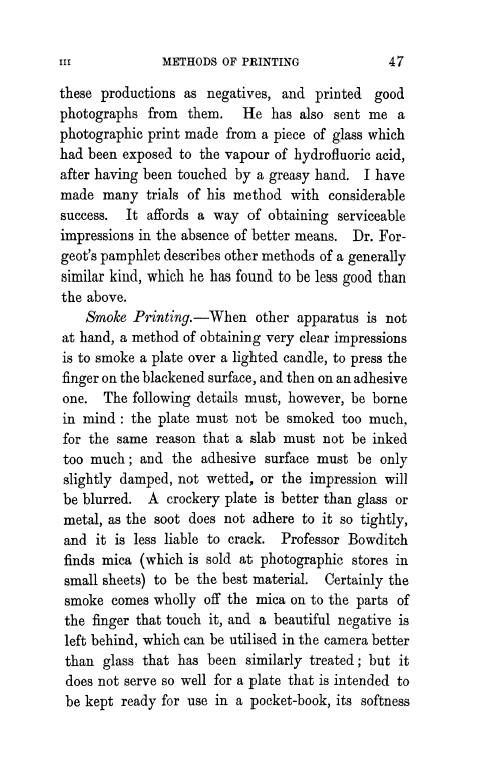iii METHODS OF PRINTING
47
these productions as negatives, and printed good photographs from them. He has also sent me a photographic print made from a piece of glass which had been exposed to the vapour of hydrofluoric acid, after having been touched by a greasy hand. I have made many trials of his method with considerable success. It affords a way of obtaining serviceable impressions in the absence of better means. Dr. Forgeot's pamphlet describes other methods of a generally similar kind, which he has found to be less good than the above.
Smoke Printing. When other apparatus is not at hand, a method of obtaining very clear impressions is to smoke a plate over a lighted candle, to press the finger on the blackened surface, and then on an adhesive one. The following details must, however, be borne in mind : the plate must not be smoked too much, for the same reason that a slab must not be inked too much ; and the adhesive surface must be only slightly damped, not wetted, or the impression will be blurred. A crockery plate is better than glass or metal, as the soot does not adhere to it so tightly, and it is less liable to crack. Professor Bowditch finds mica (which is sold at photographic stores in small sheets) to be the best material. Certainly the smoke comes wholly off the mica on to the parts of the finger that touch it, and a beautiful negative is left behind, which can be utilised in the camera better than glass that has been similarly treated ; but it does not serve so well for a plate that is intended to be kept ready for use in a pocket-book, its softness
